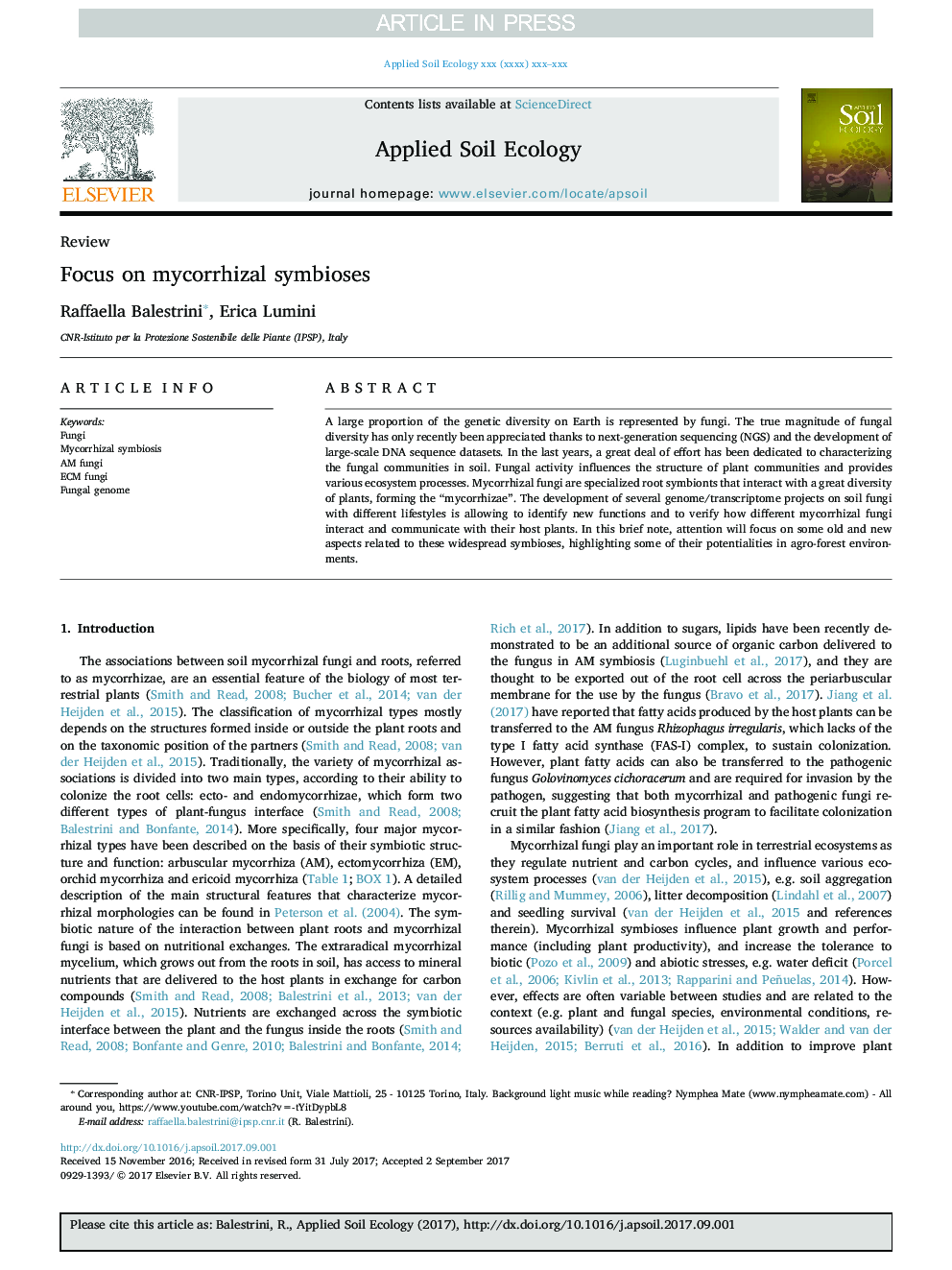| Article ID | Journal | Published Year | Pages | File Type |
|---|---|---|---|---|
| 8846822 | Applied Soil Ecology | 2018 | 6 Pages |
Abstract
A large proportion of the genetic diversity on Earth is represented by fungi. The true magnitude of fungal diversity has only recently been appreciated thanks to next-generation sequencing (NGS) and the development of large-scale DNA sequence datasets. In the last years, a great deal of effort has been dedicated to characterizing the fungal communities in soil. Fungal activity influences the structure of plant communities and provides various ecosystem processes. Mycorrhizal fungi are specialized root symbionts that interact with a great diversity of plants, forming the “mycorrhizae”. The development of several genome/transcriptome projects on soil fungi with different lifestyles is allowing to identify new functions and to verify how different mycorrhizal fungi interact and communicate with their host plants. In this brief note, attention will focus on some old and new aspects related to these widespread symbioses, highlighting some of their potentialities in agro-forest environments.
Keywords
Related Topics
Life Sciences
Agricultural and Biological Sciences
Ecology, Evolution, Behavior and Systematics
Authors
Raffaella Balestrini, Erica Lumini,
